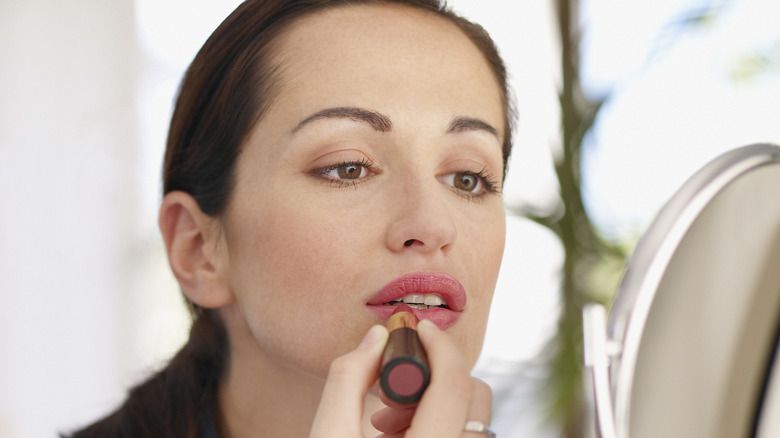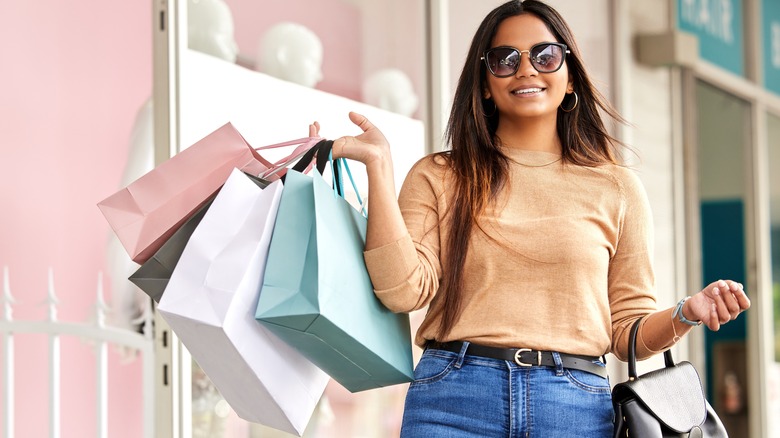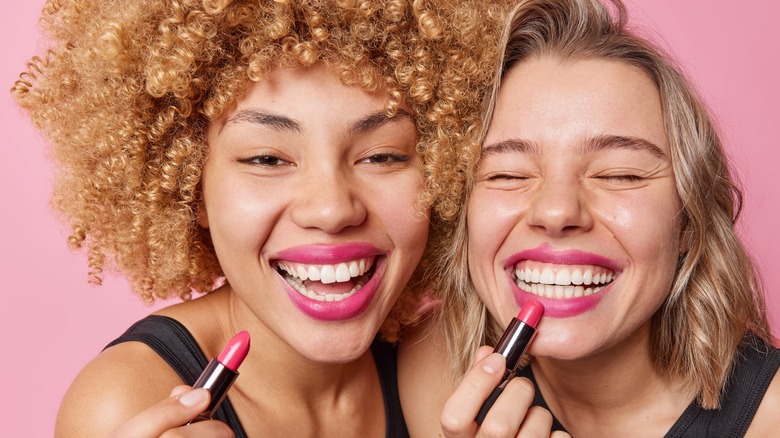'The Lipstick Effect': Do People Really Buy More Expensive Cosmetics When The Economy Is Bad?
Lipstick is a staple item in makeup bags around the world. According to historical records, this has been true for more than 5,000 years. Most people use it as a tool for brightening and emboldening lip color. However, a number of economists and psychologists are using it to gauge the economy. While these two topics seem like they are in entirely different domains, specialists have found a link between the two — it's a phenomenon known as "the lipstick effect."
The "lipstick effect" refers to the idea that women purchase more lipsticks when the economy is in bad shape. Per Insider, the phrase is often attributed to the previous CEO of Estée Lauder, Leonard Lauder. Insider writes that in the aftermath of 9/11 and the economic recession that followed, Lauder reported a significant uptick in purchases of the brand's lipstick. A 2020 study published by the Journal of Behavioral and Experimental Economics investigated the spending habits of women ages 18-40 during the 2007 recession. They found an upsurge in cosmetic product purchases during the years when money was the tightest. There are a few theories that try to explain this seemingly impractical trend.
Misconceptions around 'the lipstick effect'
In a 2012 article published in the Journal of Personality and Social Psychology, researchers theorized that the "lipstick effect" was a result of evolutionary mating psychology. "The lipstick effect reflects a strategic shift in women's consumer behavior that is guided by the desire to attract the mates they most desire in an environment where they are rarified," the researchers concluded.
Though this paper is frequently cited, a 2020 study published in the Journal of Behavioral and Experimental Economics suggested that the women who contributed to the increase in cosmetic purchases included an even mixture of married and single women, employed and unemployed. It's also clear that the conclusion drawn by the 2012 study was viewed through an erroneously heteronormative lens — it failed to include the variety of lipstick lovers out there who aren't straight, cis-gender women. While these researchers didn't quite hit the mark, some other theories are somewhat more substantiated.
Possible explanations for the 'lipstick effect'
It turns out, the most popular lipstick color for women to buy is contrary to what men find the most attractive. That said, there are various potential reasons why lipstick purchases increase when the economy is down, and they have nothing to do with mating and the male gaze. "Perhaps people simply trade down to cheaper luxury and feel-good purchases when money gets tight," consumer psychologist at the University of the Arts, London, Dr. Paul Marsden, told Byrdie. This is a great hypothesis, considering a survey conducted by Ebates.com found that 51.8% of adult Americans purchase products when they are seeking to improve their mood.
It is possible that lipstick falls into the "morale booster" category of recession spending, as suggested by the 2012 study published in the Journal of Personality and Social Psychology. However, there has yet to be any conclusive evidence that explains "the lipstick effect." Whether it's lipstick, single-use facials, or a new book, purchasing low-cost luxury items (in moderation) can be a pick-me-up in the face of the financial, societal, and political distress that recessions entail.


